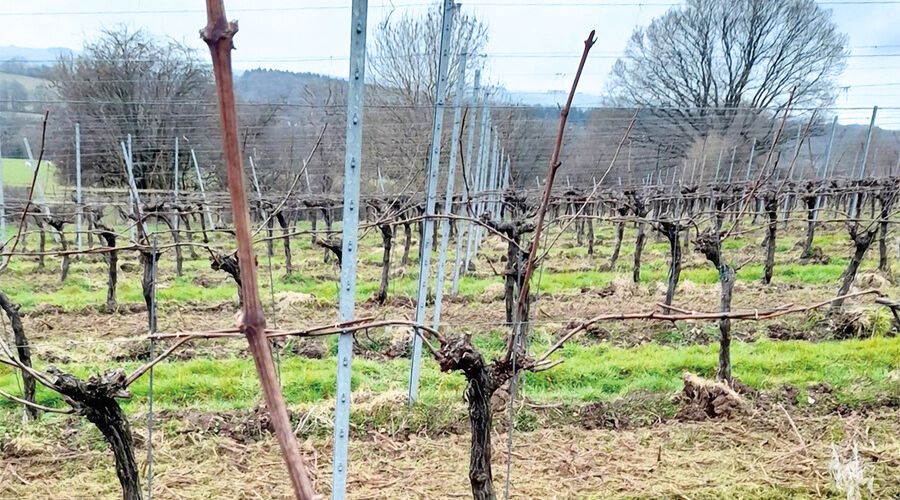Pruning for frost protection in vineyards
9th November 2024
VineWorks business director, Chris Buckley, offers advice for pruning techniques to mitigate the risk of frost damage.

Spring frosts have become a growing concern for UK grape growers. Despite centuries of viticulture, protecting young vines from frost remains a critical challenge.
Conventional frost protection methods like gas burners, candles, large fans, and sprinklers remain useful, and innovations like Frolight’s infrared frost protection system provide interesting new solutions. However, both approaches should be supported by pruning techniques that help vines safeguard themselves against frost damage.
Frost can damage young grapevine tissue in two primary ways: By causing ice crystals that burst cell walls, or by triggering osmotic dehydration that weakens cell structure. Dormant buds, shielded by protective outer layers, are far more resistant to frost than the tender tissues of emerging shoots. Thus, delaying the development of the buds most crucial for the upcoming season until the frost risk has passed is essential.
Given a vine’s natural tendency toward apical dominance – where the buds furthest from the trunk are more likely to break first – timing your pruning can make a significant difference. While late pruning could theoretically delay bud break, it is often impractical on a large scale. However, two effective techniques – double pruning and sacrificial canes – offer viable solutions.
Double pruning

This method is particularly effective for spur-pruned vines and can even be mechanised for the initial pruning. The process involves cutting all shoots back to 30–45cm above the desired spur height during winter. Later, closer to the end of the frost risk period, a skilled pruning team can conduct the final spur and bud selections.
A similar technique can be applied to guyot-pruned vines by leaving canes and spurs longer than necessary and then trimming them back later.
However, managing very long canes can be tricky when buds are developing and leaves are emerging, as there is a large risk of damaging the buds when tying them down. It is best to slow this procedure down considerably to avoid damage.
Sacrificial canes
Originally used to manage vine vigour, this technique also helps delay bud break on canes already tied down, thereby reducing frost damage. Start by selecting and trimming your primary canes, then tie them down as usual. Leave them slightly longer than needed as an added precaution. Next, select your spurs, leaving them as extra-long upright canes – these will serve as your sacrificial canes. No need to trim these, as they are intended to be sacrificed after the frost risk has passed.
Once the frost season is over, assess your vines for damage. If the buds were successfully protected, cut back the sacrificial canes to the standard spur length and remove the excess growth. If some buds were damaged, remember that you left more buds than necessary on the vine. Trim the sacrificial canes to the desired length, ensuring enough healthy buds remain to maintain vine balance and support a strong crop. A double fruiting wire (Pendelbogen) system can help make tying down these extra canes easier without damaging the new shoots.
Frost often affects specific areas, such as low-lying pockets or along certain hedgerows. By keeping detailed records of frost damage in your vineyard, and monitoring using strategically placed weather sensors, you can target your pruning strategies – whether double pruning or using sacrificial canes – on the areas most prone to frost.
These updated techniques offer an adaptive approach to vineyard management, helping to mitigate the risks associated with unpredictable spring frosts.
About our expert
VineWorks has been establishing and supporting UK vineyards since 2006. With over 4.5 million vines planted, 300 vineyards established and thousands of tonnes of grapes hand-harvested, our expertise comes from experience.
Visit www.vine-works.com for more information and to get in touch.
Read more vine news.
